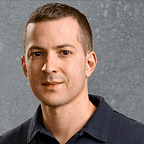Our Investment In Chronosphere
Ex-Uber engineers push forward the frontier of time series infrastructure
At Lux Capital we believe there are directional trends of technological progress. One clear trend is that many enterprises are moving from batch processing to real time streaming, monitoring a few aspects of a business to monitoring many aspects, and operating applications in a few regions to operating in many regions.
We also believe in each wave of innovation there are a few soothsayers that see the problems first and out of necessity invent solutions. For the tech giants, many of these challenges were around computing infrastructure. Google and Yahoo were the first companies that required distributed data processing which led to the Hadoop platforms — Facebook was the first network that experienced social at scale which spawned Cassandra, React Native, and GraphQL — and Uber was one of the first companies confronted with infrastructure challenges as fast moving product teams leveraged time-series data and high cardinality metrics. The innovations led the respective companies to become successful in their own markets but much of the technology and the moral authorities over the projects went on to become important providers of critical computing infrastructure.
Chronosphere, founded by Martin Mao and Rob Skillington, previously led the team that built M3 — Uber’s open source large scale metrics platform. During that time, Uber required infrastructure to support hyper growth in a cost effective manner while operating with zero downtime. Monitoring and observability costs can scale roughly linearly with the amount of data (up to an inordinate amount of a compute budget) where M3 allows costs to scale sub-linearly while being designed from the ground up to store tens of billions of time series metrics.
Storing metrics is just half the story where the other half is helping enterprises make sense of the large amounts of data being processed and stored. The first products from Chronosphere will be built on top of M3 and provide a hosted end-to-end monitoring platform to help companies analyze and gain insights from the data.
We believe Uber won’t be the only enterprise to run into similar challenges around managing large scale time series data. This has been reinforced by underlying adoption in the open source M3 project being used by large public companies. Increased cloud migration and the transition of applications from pure monoliths to the proliferation of microservices (where Uber has thousands) will only highlight the importance of what Chronosphere has built.
Enterprises have asked the question “what can we do with 10–100x compute?” — the next question to be asked is “what can we do with 10–100x more monitoring?”. Some answers to that are real time alerting, tracking business metrics, capacity planning, infrastructure monitoring and much more.
We are proud to join Chronosphere in their $11M Series A round with friends at Greylock as founders Martin and Rob push forward the frontier of time series monitoring and observability infrastructure.
